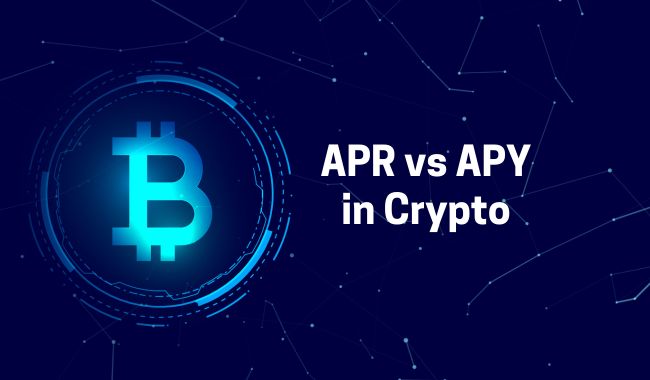
For managing funds in the crypto universe, it is necessary to understand what APR and APY are, LI.FI makes this process easier.
The cryptocurrency industry has developed into a popular option for investing money rather than just being a way to save or transfer funds. To get the most out of their assets, however, investors must first comprehend the numerous terminologies and requirements used to assess them.
The phrases APR and APY are well-known in the financial world, especially in the cryptocurrency sector. They both refer to the rate of return on investment, but they mean and have different implications.
What are APR and APY in general?
The interest charged on loans is expressed as an annual percentage rate or APR. It merely displays the interest paid over the course of a year on the loan or credit card balance.
As its name suggests, it is consistently released as a percentage. For instance, the cardholder would pay 20% interest on their balance each year if the annual percentage rate (APR) on the credit card was 20%.
The term annual percentage yield (APY) is used to indicate how much an investment has earned. These investments may take the form of certificates of deposit or savings accounts. Unlike APR, it considers the impact of compound interest!
While compound interest may appear to involve complex math, it simply involves adding interest from an investment to the principal to determine the interest for the following month. This indicates that the investment grows more rapidly over time and generates a far bigger return than simple interest.
What are APR and APY in Crypto?
The roles of APR and APY are similar in the crypto world to the ones in finance.
Crypto APR vs APY describes the percentage of return on investments and explains staking and lending. Staking involves holding cryptocurrency in a wallet and using it to validate transactions, while lending involves borrowing cryptocurrency from others and earning interest.
Financial institutions use APR to promote their credit products. The periodic interest rate multiplies the number of periods in a year where the rate is applicable. The APR is calculated by the Periodic Rate x the total number of cycles each year.
Unlike the APR, APY considers the frequency of interest payments so the investment providers advertise the more attractive Annual Percentage Yield (APY) to attract customers more often because investors will profit more from APY on items including certificates of deposit, select types of accounts, and individual retirement accounts.
APY is calculated using the periodic rate multiplied by the number of times it corresponds to the periods for which the rate is applied, divided by 1.
The difference between APR and APY in Crypto
When it comes to staking, the APR is the amount of rewards obtained for taking part in the blockchain’s transaction validation, whereas the APY operates according to the concept of compound interest.
Due to its higher rate of return on staked investments, APY is a better investment as a result of this element. Investors that stake their cryptocurrencies in a staking pool with an APY of 12% will receive a 12% return on their investment in rewards.
For lending, APR is the percentage of interest earned on a loan, whereas APY is the percentage return on lending. Taking into account compound interest, investors would receive a 6% return on their investment in interest if a lending platform offered an APY of 6%.
To determine which one will be better for you, you can always use an APY vs APR crypto calculator.
